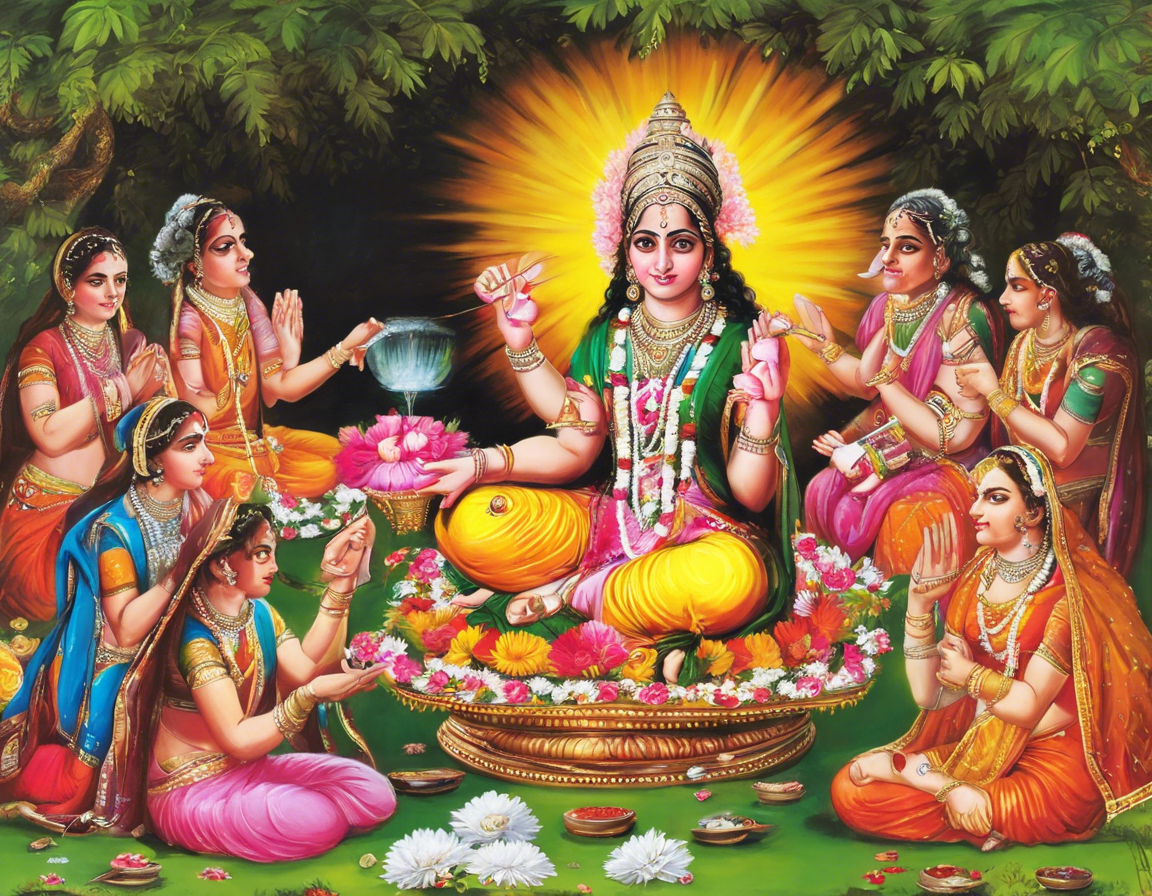
Introduction:
Vat Savitri Vrat is a significant Hindu festival observed by married women in India, particularly in states like Maharashtra, Gujarat, Karnataka, and Uttar Pradesh. This tradition holds immense cultural and religious significance, where women fast and pray for the longevity and well-being of their husbands. The observance of Vat Savitri Vrat is intertwined with the age-old Vat Savitri Vrat Katha, a mythological narrative that commemorates the devotion and sacrifice of Savitri for her husband Satyavan. Let’s delve deeper into the roots of this tradition, its customs, and the underlying philosophy.
The Legend of Savitri and Satyavan:
The Vat Savitri Vrat Katha revolves around the story of Savitri, a devoted wife who undertakes severe penance to save her husband Satyavan from the clutches of death. According to legend, Savitri was the daughter of King Ashwapati and a woman of unparalleled beauty, intelligence, and virtue. She chooses Satyavan, a wise prince but destined to die within a year, as her husband against her father’s wishes.
As the fateful day approaches, Savitri accompanies Satyavan to the forest. While resting under a banyan tree (also known as Vat), the god of death, Yama, appears to take Satyavan’s soul. Unflinching in her devotion, Savitri follows Yama closely as he carries away her husband. Impressed by her unwavering love and determination, Yama grants her three wishes.
Savitri cleverly uses her wishes to bring Satyavan back to life. Yama, bound by his word, revives Satyavan, and the couple reunites. This tale of love, loyalty, and the triumph of devotion over death symbolizes the essence of true marital bliss and the boundless strength of a committed partner.
Observance of Vat Savitri Vrat:
The Vat Savitri Vrat Katha lays the foundation for the observance of Vat Savitri Vrat, an annual ritual observed by married women seeking marital harmony and the well-being of their spouses. The customs and practices associated with this Vrat vary across regions but generally involve the following:
1. Fasting: Women fast from sunrise to moonrise, abstaining from food and water throughout the day. The fast is broken after sighting the moon, signifying the end of the Vrat.
2. Ritual Bath: Women begin the day with a ritual bath before dawn, cleansing themselves physically and spiritually to embark on the day-long fast.
3. Puja: Women offer prayers to Lord Brahma, Lord Vishnu, and Goddess Parvati, seeking their blessings for a blissful married life. They also perform a special puja dedicated to the banyan tree, representing the Vat Savitri tree under which Savitri prayed for her husband’s well-being.
4. Tying the Thread: Married women tie a ceremonial thread around a banyan tree, symbolizing the eternal bond of marriage and praying for their husbands’ long life and prosperity.
5. Sargi: Before sunrise, women receive Sargi – a meal prepared by their mothers-in-law that they consume before starting the fast. Sargi typically consists of fruits, sweets, and other auspicious foods meant to provide sustenance throughout the day.
Significance of Vat Savitri Vrat Katha:
The Vat Savitri Vrat Katha symbolizes the epitome of spousal devotion, sacrifice, and unwavering faith in the institution of marriage. The narrative underscores the belief that a sincere and steadfast partner can overcome even the most challenging circumstances through love and dedication. By observing the Vrat and reciting the Katha, married women seek to imbibe the virtues of Savitri, reinforcing their commitment to their husbands and familial harmony.
FAQs (Frequently Asked Questions):
1. Are unmarried women allowed to observe Vat Savitri Vrat?
– Vat Savitri Vrat is traditionally observed by married women, but unmarried women can also participate to seek blessings for a suitable life partner.
2. Can women with health issues or pregnancy observe the fast?
– Women with health concerns or pregnant women are advised to consult with a healthcare professional before observing the fast.
3. What should be included in the Sargi meal for Vat Savitri Vrat?
– Sargi typically includes fruits, nuts, sweets, and traditional delicacies like puris and halwa for sustained energy throughout the day.
4. Is the Vat Savitri Vrat Katha recited in all regions of India?
– Yes, the Vat Savitri Vrat Katha is a widely known narrative and is recited by married women across various states in India.
5. How does the Vat Savitri Vrat promote marital harmony and longevity?
– The Vrat encourages women to reflect on the virtues of devotion, sacrifice, and love exemplified by Savitri, fostering a deeper commitment to their spouses and enhancing marital bliss and longevity.
In conclusion, the Vat Savitri Vrat Katha tradition encapsulates the essence of love, sacrifice, and devotion inherent in a committed marital relationship. By observing this Vrat and recounting the tale of Savitri and Satyavan, married women uphold the values of loyalty, compassion, and unwavering faith in their marriages. The Vat Savitri Vrat Katha serves as a poignant reminder of the enduring power of love and the boundless strength of a partner’s devotion.
